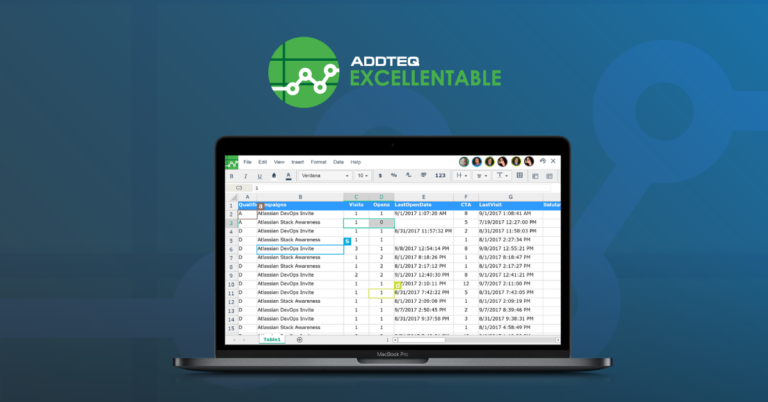Most organizations strive for business development and growth. In this endeavor, one critical objective is effectively managing IT infrastructure. This becomes even more crucial in the software industry where IT is the central business function.
Today, organizations are looking for tools that ensure that incident management is taken care of efficiently and that provide visibility into the overall progress of projects. A sufficient IT help desk tool should have the capability to generate timely reports on key metrics such as: time to response, and time to resolution. JIRA Service desk accomplishes these tasks and also serves as a common forum for users and IT service management to communicate over issues. Service desk assures that every concern raised by the user is routed to the corresponding team so that it is well attended and resolved in time.
JIRA Service desk shines in terms of flexibility and customizability. It allows support teams to customize and configure a help desk for their specific needs. The interface that the client interacts with to file issues, how those issues are triaged and prioritized against other issues, setting goals/targets, and customizing workflows are just a few of the functions JIRA Service Desk allows you to configure to your liking. Let’s have a look at just how this can be done in JIRA Service Desk.
1. Raise the Issue ( Customer Portal ):
The first thing your customer will see when accessing you JIRA Service Desk (JSD) system is the customer portal. Out of the Box, JSD comes with a few default request types (and cool icons (smile)) that you may or may not want to use when configuring your own customer portal. Each request type is configurable, and is mapped to an issue type your choice. When configuring the request types, it is recommended to be sure to use language on the customer portal that your customers will be familiar with. Each request type will enter your system as an issue type, so your team never can continue to use the language they are accustomed too.

From the admin portal, making these configurations are straight forward. Just click on the “Customer Portal” tab, and you will see a button labeled “add” a request type. Once you’ve created the request types, you can begin customizing forms associated with each request type. Again, we want to be careful to use language the customer understands when configuring our forms. Each field created will be mapped to a field in your JIRA issue. This allows for your team to still receive the data rich issues they need from the customer in order to begin working on a resolution.
2. Fill the Right Bucket (Categorizing Reported Issues into respective Queues):
Now that we’ve configured the customer portal, all of your customers will be excited to begin firing off issues over to IT support. As issues are being raised left and right, its important to implement some architecture to organize, triage, and prioritize these issues as they come in. This gives your team the best chance responding to each issue in an appropriately timely manner. This is where customizing your queues comes in. We can configure various queues based on the type of ” issue buckets” your team wants to view. A few common examples include setting up a queue based on issue type, issue priority/severity, issues” assigned to me”, etc. Using JQL (JIRA query language) you can customize your own filters for each queue. Perhaps as an IT lead or manager you may want view all issues created with a “blocker” or “critical” priority. However you wish categorize and view issues it can be done with the customizable queues in JIRA Service Desk.
3. The Clock is Ticking ( Timely Response, Resolution … SLAs ):
When an issue is created, how soon should that issue be responded too? How soon should it be resolved? Here, the concept of SLA (Service Level Agreements) comes into picture. An SLA It’s an agreement between the customer and the service team to provide a resolution for the issues raised within certain time frame. Every issue raised travels through various stages like – acknowledgement from the receiver, clarification from customer, dependency on third party (if applicable) for resolution, etc. If we think into SLA terms, this all translates into time to respond, time waiting on support, and time for resolution. At these phases during the issue cycle, we can assign an SLA goal or target for our support team to meet. We can customize these goals and targets based on the issue types, priority, or any other parameters using JQL. For each issue we are allowed to determine, when the SLA clock should begin counting down (i.e. when issue is created), when the clock should be paused (i.e. waiting on customer to respond), and when the clock should stop (i.e. issue has been resolved).

SLAs are a great compliment to your queues. Let’s say you’ve defined a specific SLA around issues of critical or blocker priority. You may want to also add that SLA as a column in your queue; now whenever you or your team are viewing issues in that particular queue, they can easily see how much time is left remaining on each issue. Prioritizing your queue by this SLA is also possible, so that way the issues at the issues that require the most urgent attention appear at the top of your queue.
Moreover, an organization can also establish the working hours of your support team by configuring the “Calendar working hours” in the SLA section as shown in the snapshot. The SLA’s you configured will be applicable only during the configured days and stated time. You can set up multiple calendars as well.
4. Amassing the Statistics ( Generating Reports ):
Service desk also helps in tracking various assets, inventory, softwares, connections, network, licensing of s/w, costs, purchases etc. Reports can also be generated for overview picture of various tasks and monitoring service desk performance.
Root cause analysis and trend analysis can be done on these incidents to figure out the core problem and avoid similar incidents in future.
These problem and incident resolution can lead to changes in the system or system can have a new change request. The impact of these changes can be analyzed and monitored by the service desk.
Also, for an example, there is need of upgrade involving a server connected to 5 different projects. An approval from all 5 different managers (Change advisory board) would be required prior to scheduling a change. Thus, service desk helps in managing all aspects of change, also involving roll out plan, back out plan, tracking change history etc. This helps reduce the havoc/ turmoil that’.
The detailed and well organized reports can help us taking such decisions. The prior way of generating reports manually using excel sheets etc, can really be painful. JIRA Service Desk helps us by providing the facility to generate the automated and customized reports using JQL.
5.A Library to Refer ( Knowledge Base of Recorded Issues ):
Knowledge base is one useful add on offered by JIRA service desk for knowledge sharing and management. For this, a database, known as knowledge base, has to be created first. The implementation of the same can be done by blending confluence with JIRA Service Desk.
A basic structure is thus provided as default template, which is customizable. These articles can be referenced by live search box, popping up related articles or are located in one place for referencing later.
Now, a person can jump to knowledge base to find a solution in the related articles, before raising a ticket. This will lessen the time spent on a single ticket by a person when a solution is already present with a team, thus ensuring increased productivity!
With the help of knowledge base, the solution is well documented and accessible to the authorized person.
Technology and software has become part of almost every aspect of our lives. It’s especially prevalent in businesses today. Unfortunately, software and technology aren’t always our best friends (or our customer’s best friends). Issues are bound to come up. The faster we are able to detect and resolve these issues the happier everyone is at the end of day. For this reason, having a support desk in place is important. One that allows your team to work effectively and efficiently. And let’s not also forget, one that your customers are going to feel comfortable interacting with. We can be assured that the JIRA Service desk will help organizations streamline the way the users communicate over the incidents and issues. The smooth sailing customized implementation of JSD will help users to accurately report the incidents while allowing organizations to precisely burn through support request with stellar speed and efficiency.




